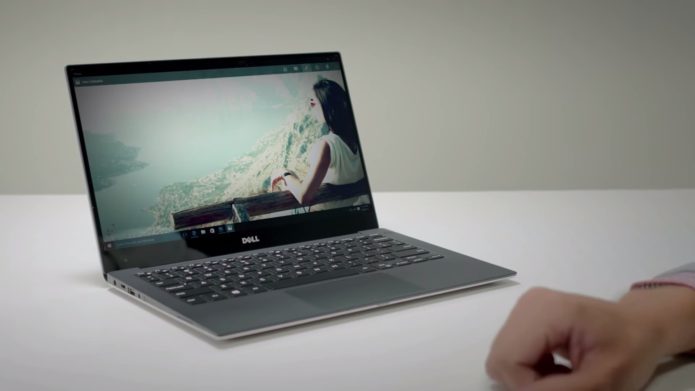A new generation of the Surface Laptop has been released by Microsoft. Sporting powerful 8XXX Intel processor and a new color scheme, the laptop appears to be a familiar but substantial improvement over the previous version. Does it have what it takes to go toes-to-toes with the competition? Read below to learn our opinion.
In the contender corner, we have the Dell XPS 13, itself a refreshed version of the long-standing XPS series and serious competition to the Surface Laptop 2.
The looks
Taking the cue from its predecessor, the Surface Laptop 2 is a thin notebook with a well-crafted full-aluminum build that is beautiful to look at. The Alcantara fabric is also back, matching the color theme and making the keyboard back more comfortable. It also contributes to the feel that you bought a quality device.
The XPS 13 has received a serious design bump as the laptop is slimmer, with smaller bezels and a well-made chassis. This renders it the smallest laptop in is range, and the use of improved materials allows performance without compromise. Additional color schemes, like white and rose gold add a bit of flavor to the overall design. Premium details are also present as the device offers carbon fiber touches on black and silver version, while the other one opts for a more elegant woven material for the palm rest keyboard deck
Show me your strength
Both units offer Intel’s 8th generation CPU, which makes them lightning-fast while keeping power consumption low. Since we are talking about office laptops, the production values should be more than enough for most users.
When it comes to display, the Surface Laptop 2 offers an impressive 3000 x 2000, a format that is recommended for productivity task by Microsoft. Dell entices users with a choice between Full HD, (1920 x 2080) or an exquisite 4K UHD (3840 x 2160), which offer great images and decent brightness levels.
When it comes to storage space, the Dell offers improved speeds to its PCI storage solution, but the difference should not be noticeable unless you are running benchmarks on the two devices at the same time.
Both laptops are optimized when it comes to heating, so a cooler is not necessary, although it may help you during the long summer days, when any device tends to heat up when used.
On the go
The Surface Laptop 2 may not be the thinnest laptop available, but at 0.57 inches and 2.76 pounds, it is pretty easy to carry around. Battery life should easily reach the 12 hours, which makes it pretty reliable even on long trips.
A bit thinner, Dell’s XPS 13 is also quite portable at a manageable 2.68 pounds, which is a bit lighter than the Surface, but still not the lightest available. Battery life is also consistent, as the device is able to last for at least 10 hours while running an intensive benchmark.
Money talks
When it comes to pricing, both laptops can be easily deemed premium models, as they start out at $1000 for the minimal configurations available. This translates into i5 processor, 8G of RAM and a modest 128 GB SSD for the Surface Laptop 2. For the same price, Dell offers an i5 chip, an equally sized 128 GB SSD and a modest 4GB RAM, with lesser full HD display. Dell wins when it comes to premium option as $2,100 dollars will net you a Core i7, 16 GB RAM, a generous 512 GB SSD and the sweet 4K display. Microsoft keeps the same screen resolution while swapping the innards to offer a similar i7 chip, 16 GB of RAM and a giant 1TB SSD. The sad part is the price, which goes up to $2,700.
The verdict
Both contenders are great, but the Dell XPS 13 our winner. It offers a wealth of features, it’s smaller, and the best version sports a 4K display a very good price.


